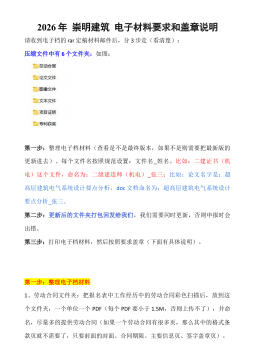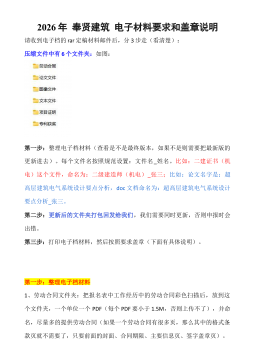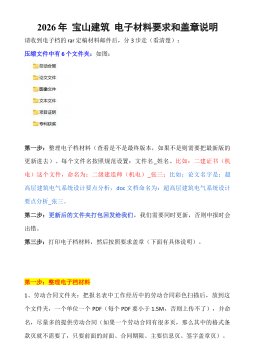词汇重复研究——《时代周刊》商务新闻分析
VIP免费
Acknowledgements
My foremost appreciation goes first to my supervisor, Professor Cheng Yuefang,
who has given me considerate encouragement, insightful suggestions, and valuable
advice throughout my study for the Master’s Degree. She has offered me many
suggestions from choosing the research subject to conducting the research. She has
examined and bettered each draft of the thesis with much patience during her busy days.
Being strict with us in study and kind to us in life, she has impressed us with her
precision in research and solicitude for each student.
My gratitude also goes to other professors whose informative advice and lectures
have largely enhanced my knowledge and widened my view in academic study.
I am very grateful to my beloved parents and sisters, who have always been
offering encouragement, support and understanding.
At last I am equally grateful to my classmates and friends who have taken great
trouble to help me.
CONTENTS
Acknowledgments
中文摘要
ABSTRACT
Chapter One Introduction ........................................................................................... 1
§1.1 Motivation of the Research ................................................................................ 1
§1.2 Objectives of the Research .................................................................................2
§1.3 Organization of the Research .............................................................................3
Chapter Two Theoretical Consideration of the Research ........................................... 4
§2.1 Literature Review of Lexical Repetition ............................................................4
§2.1.1 Definition of Repetition .................................................................................. 5
§2.1.2 Patterns of Lexical Repetition .........................................................................5
§2.1.2.1 Simple Lexical Repetition ............................................................................5
§2.1.2.2 Complex Lexical Repetition ........................................................................ 6
§2.1.2.3 Simple Partial Paraphrase ............................................................................ 7
§2.1.2.4 Simple Mutual Paraphrase ........................................................................... 8
§2.1.2.5 Complex Paraphrase .................................................................................... 9
§2.1.2.6 Co-reference Repetition ............................................................................. 12
§2.1.2.7 Deixis ......................................................................................................... 12
§2.1.2.8 Substitution ................................................................................................ 13
§2.1.2.9 Ellipsis ........................................................................................................14
§2.2 A Brief Overview of News ...............................................................................15
§2.2.1 Definition of News ........................................................................................16
§2.2.2 Classification of News .................................................................................. 17
§2.2.3 Social Function of News ...............................................................................17
Chapter Three Research Method .............................................................................. 19
§3.1 Corpus for the Research ...................................................................................19
§3.2 Method of Analysis .......................................................................................... 21
Chapter Four Analysis of Business News from Time ............................................... 23
§4.1 Separate Analysis of Samples .......................................................................... 23
§4.1.1 Analysis of Sample 1 .................................................................................... 23
§4.1.2 Analysis of Sample 2 .................................................................................... 30
§4.1.3 Analysis of Sample 3 .................................................................................... 35
§4.1.4 Results from the Individual Analysis of Three Samples ...............................39
§4.2 Process that Lexical Repetition Links Work ....................................................40
§4.2.1 Central Sentences and Marginal Sentences .................................................. 40
§4.2.2 Topic-opening Sentence(s) ............................................................................41
§4.2.3 Results ...........................................................................................................44
Chapter Five Conclusion .......................................................................................... 45
§5.1 Major Findings .................................................................................................45
§5.2 Suggestions for Further Research .................................................................... 45
Bibliography ................................................................................................................ 47
在读期间公开发表的论文 ......................................................................................... 49
Appendix I
Appendix II
Appendix III
Chapter One Introduction
-1-
Chapter One Introduction
So far, English is widely learned and applied in almost every corner of the world.
The more area English covers, the deeper people will study. Before the 1960’s, the
linguists’ interest had almost been confined to the long-established levels of linguistic
inquiry, such as the phonology, the morphology, the lexicology and the syntax. Rare
attention was paid to relations between sentences. Sentence-parsing was operated in
isolation from the relevant context. By the beginning of the 1960’s, Firth (1961) had
studied contexts and Harris (1965) investigated sentence distribution. Both of them had
contributed enormously to public awareness that text is also a communicative
occurrence. Ideas or thoughts are conveyed in texts rather than in isolated sentences.
The linguistic philosophers such as Austin (He Zhaoxiong, 1999), Searle and Grice
were also influential in the study of language as social action, reflected in Speech-Act
theory and the formulation of conversational maxims, alongside the emergence of
pragmatics, which is the study of meaning in context (Leech, 1983). Halliday’s (1973)
functional approach to language emphasizes social functions of language and the
thematic and informational structure of speech and writing. Most of these linguists have
noticed the importance of language study in contexts and have done their research very
well. There is, however, not so much practical and comprehensive investigation in how
one of the major cohesion type —lexical repetition contributes to text organization.
§1.1 Motivation of the Research
In the past thirty years, the research achievements of linguistics and applied
linguistics developed like mushrooms. Among them, discourse analysis is an
outstanding subject in that research field. With various relevant principles in theoretical
linguistics, sociology, psychology, anthropology and philosophy, discourse analysis
builds up its own theories and methods. The theoretical principles absorbed by
discourse analysis have a common point, that is, all the principles focus on language in
use and study how people apply real language instead of coined sentences. Just because
of that, theories in discourse analysis immediately attract the attention of language
teaching and learning field. Another reason is when language teachers design teaching
materials and lead learners to practicing and acting in the target language, the first thing
A Study of Lexical Repetition—Analysis of Business News from Time
-2-
that they take into consideration is how people apply real language.
Language majors in both foreign and Chinese Universities or colleges are often
required to attend language reading and writing courses. The target of the requirement
is to help English learners improve their ability to comprehend and to write. But many
universities and colleges often meet difficulties in attaining their expected teaching
effect. One reason for that is due to the traditional teaching materials which are short of
originality and lack in information. Another reason can be the teaching and learning
activities which are not so systematic or interactive as many teachers only introduce the
background information and expound the language points and difficulties in teaching
materials.
And in the modern age, people are fully exposed to the public society or mass
media such as television, newspaper, radio, internet, or something like. Some speakers
or writers do not speak or write in a correct way. Some others can speak or write
grammatically well, but what he or she says is still not understood by others. The reason
is often that what he or she speaks or writes is not coherent itself. Among so many mass
media, news magazines are chosen to be the research focus due to some of news’ innate
features, like stability, wholeness and readability, which offer great convenience for the
research.
§1.2 Objectives of the Research
With that trend, the present research is informed by those linguists’ idea discussed
in the beginning part of the research and the indispensability. This research is attempted
to apply Michael Hoey’s lexical repetition links theory to the analysis of written
journalistic news language, more specifically, the language of English journalistic
business news. How lexical repetition in business news realizes text organization of a
whole text is chosen as the topic for the M.A thesis to arouse public awareness that
coherence is the most essential criterion by which to judge texts. And to track lexical
repetitions can achieve the topic sentence and the main idea of a text Thus it is hoped
that an elementary knowledge in this respect can help foreign language teaching and
learning. On this account, it is especially hoped that the findings of the research may
give some enlightenment or inspiration to both English teachers and learners in the
teaching and learning of English reading and writing, especially summary writing
摘要:
展开>>
收起<<
AcknowledgementsMyforemostappreciationgoesfirsttomysupervisor,ProfessorChengYuefang,whohasgivenmeconsiderateencouragement,insightfulsuggestions,andvaluableadvicethroughoutmystudyfortheMaster’sDegree.Shehasofferedmemanysuggestionsfromchoosingtheresearchsubjecttoconductingtheresearch.Shehasexaminedand...
作者:牛悦
分类:高等教育资料
价格:15积分
属性:48 页
大小:436.87KB
格式:PDF
时间:2024-11-19









